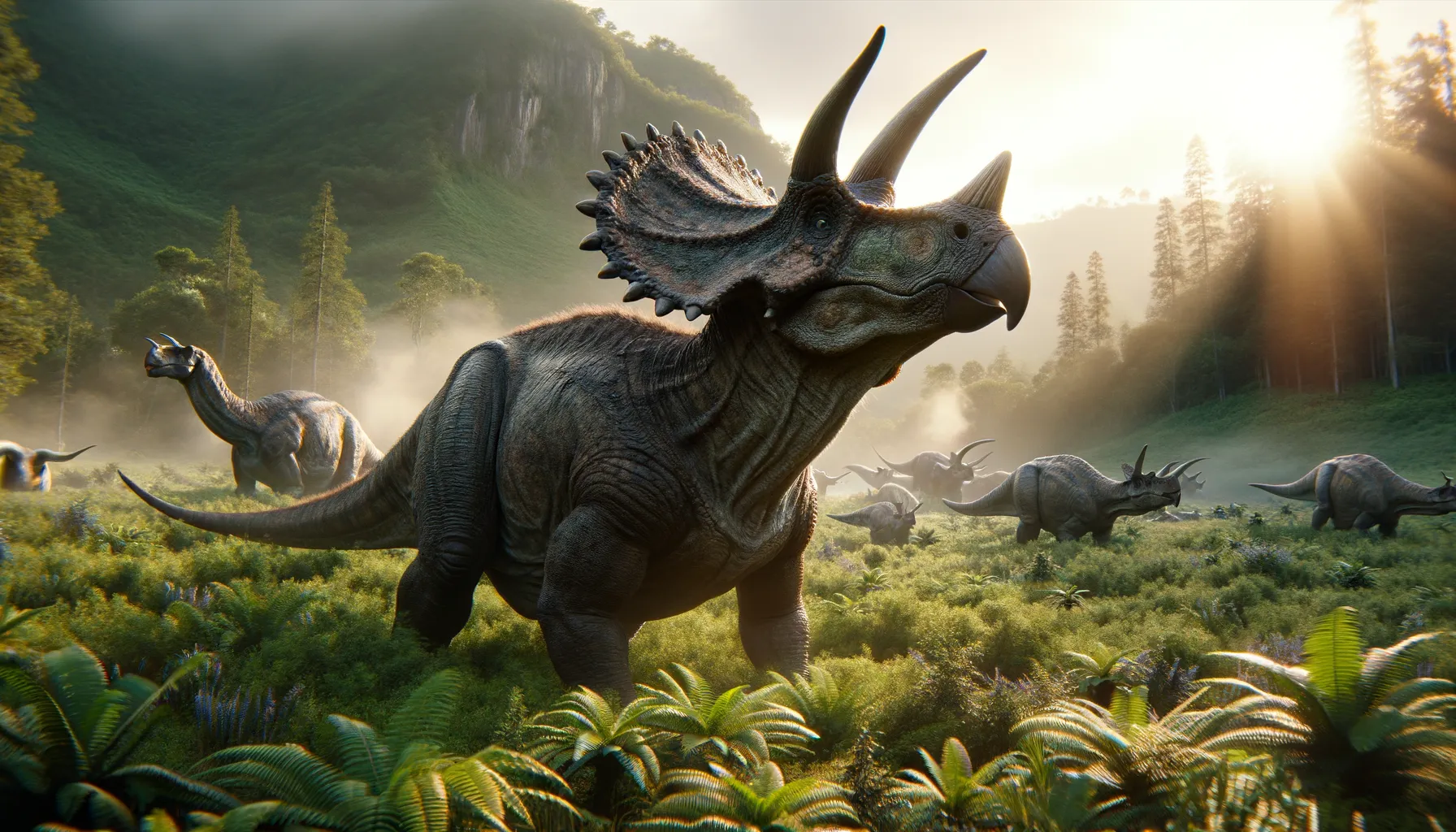
Crittendenceratops
Horned herbivore of the Late Cretaceous.
Period
Cretaceous
Length
About 3 to 4 meters long.
Height
Roughly 1.5 meters tall at the hips.
Weight
Approximately 1,500 to 2,000 kg.
Crittendenceratops is a ceratopsid dinosaur that roamed parts of North America during the Late Cretaceous. Known for its distinctive horns and frill, it was a member of the ceratopsian family, which includes more famous dinosaurs like Triceratops. This herbivore played a key role in the ecosystems it inhabited, coexisting with various other dinosaur species and adapting to the lush vegetation of the period.
Diet
Crittendenceratops primarily fed on plants. As a herbivore, its diet consisted of ferns, cycads, and conifers, which were abundant during the Cretaceous period. Its strong beak and teeth helped it strip leaves and branches effectively.
Hunting
Being a herbivore, Crittendenceratops did not hunt for prey. Instead, it grazed in groups, using its sharp beak to feed on vegetation. Its social structure likely helped in spotting predators and foraging efficiently.
Environmental challenges
Crittendenceratops faced various environmental challenges, including changes in climate and vegetation. The Late Cretaceous period was marked by volcanic activity, impacting its habitat. Additionally, competition for food resources from other herbivorous dinosaurs may have posed challenges. It also had to be vigilant against predators like large theropods.
Speed
Believed to be slow-moving, possibly lumbering.
Lifespan
Estimated lifespan of around 10-15 years.
First discovery
Discovered in southern Arizona in 2000.
Fun Facts
- Crittendenceratops was a ceratopsian dinosaur, which means it was a member of the horned dinosaurs family.
- It lived during the Late Cretaceous period, around 73 million years ago.
- This dinosaur was discovered in the Fort Crittenden Formation in southern Arizona, which inspired its name.
- Crittendenceratops had a large, bony frill at the back of its head, which probably served for display or protection.
- It was a herbivore, meaning it fed on plants, likely using its parrot-like beak to clip leaves and vegetation.
- Crittendenceratops is relatively new to science, having been officially named and described in 2018.
- Despite being a horned dinosaur, it’s not as well-known as the famous Triceratops, but it's an interesting find for understanding dinosaur diversity.
Growth and Development
Juvenile Crittendenceratops likely spent the early part of their lives in protected environments. As they grew, their distinctive horns and frill developed, providing defense and mating advantages. Life stages may have been marked by changes in size and social dynamics.
Habitat
Crittendenceratops lived in areas with abundant vegetation, such as forests and floodplains. Its habitat provided ample cover and food resources, essential for survival. Water sources like rivers likely played a crucial role in its ecosystem. Seasonal changes might have influenced migration patterns and food availability.
Interaction with other species
Crittendenceratops coexisted with various dinosaurs, including other herbivores and dangerous predators. It likely had minimal interactions with carnivores, as its primary focus was on foraging. Herd behavior might have been a strategy to deter predators and increase survival chances.
Natural lifespan
Crittendenceratops naturally lived for around 10-15 years.
Reproduction
Crittendenceratops likely laid eggs in nests constructed in secluded locations. Parental care may have included protecting the nests from predators and environmental hazards. Hatchlings might have relied on adults for guidance in the early stages of life.
Social behaviour
Crittendenceratops is thought to have lived in herds for both protection and social interaction. This social structure helped reduce the risk of predation. The dinosaurs possibly communicated through vocalizations and visual displays, reinforcing their group dynamics.
Fossil locations
Fossils of Crittendenceratops have primarily been found in southern Arizona. The region provides significant insight into Late Cretaceous ecosystems. Excavations have revealed important information about its physical characteristics and lifestyle. Fossil sites are crucial for understanding the distribution and diversity of ceratopsids.
